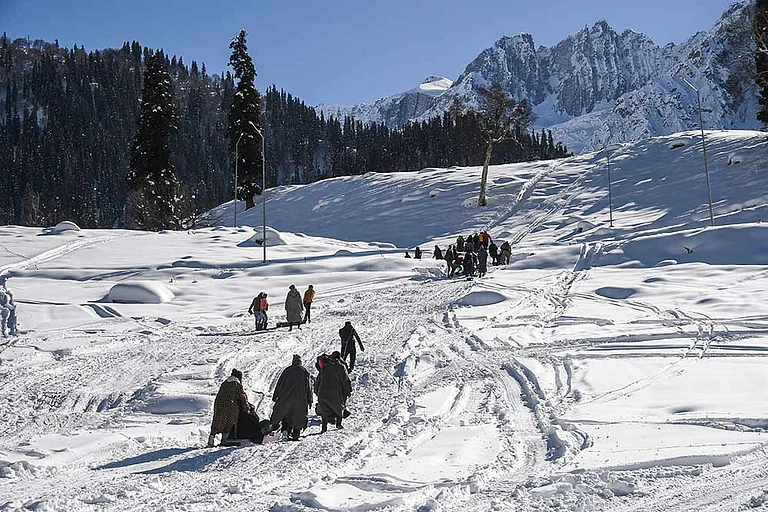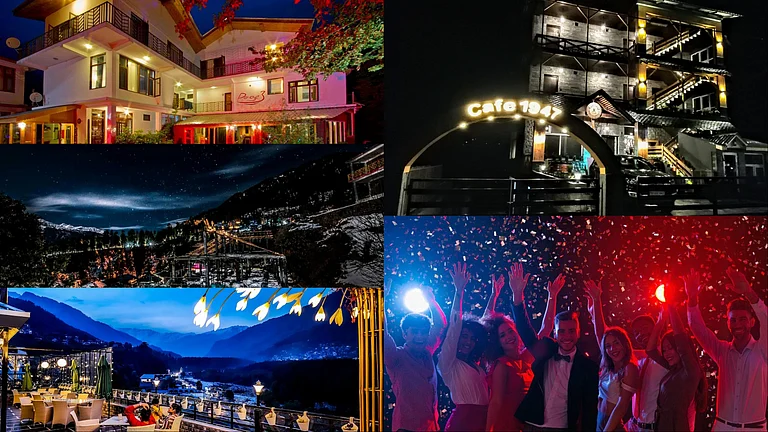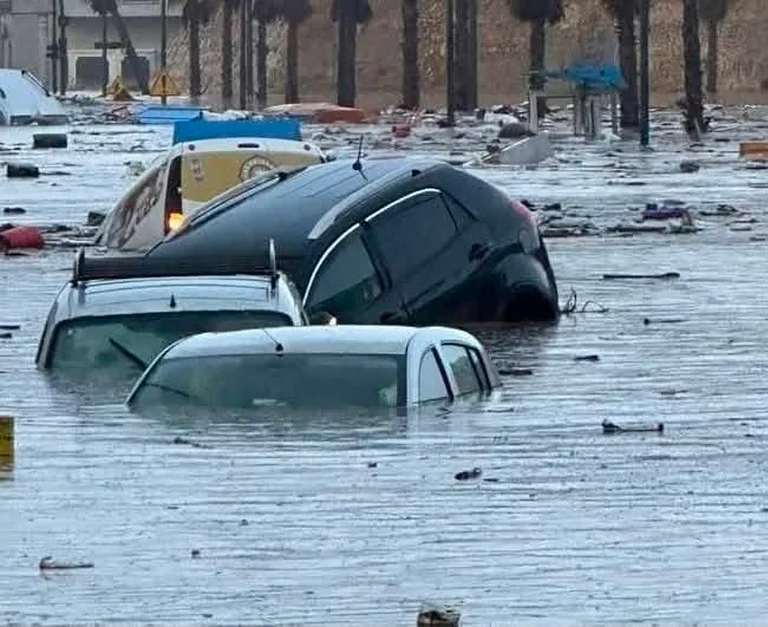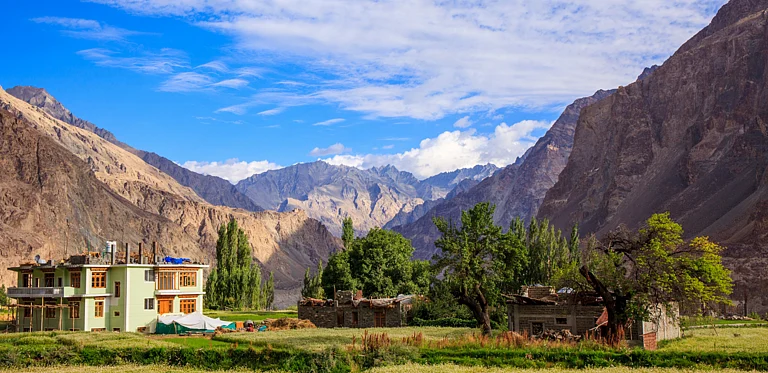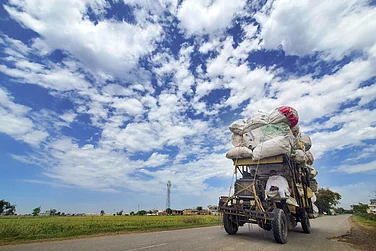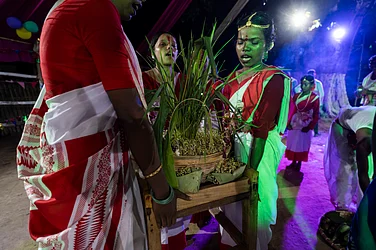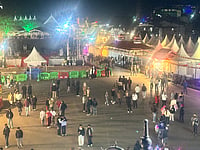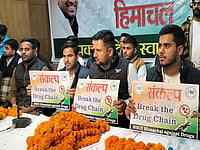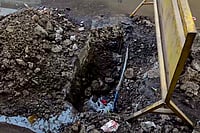
The 2025 monsoon has left a grim picture of Manali, with parts of the highway washing away and buildings collapsing under torrential rains.
The National Highway connecting the country to Leh has collapsed.
Thousands of tourists and more than 2,500 vehicles remain stranded.
Set on the banks of the Beas River, Manali—once a bustling town in the Kullu Valley and a gateway to Leh through the Rohtang Pass—stands in stark contrast to its old-world charm.
Some years ago, former Prime Minister Atal Bihari Vajpayee, the country’s first high political dignitary, chose this hill retreat as his second home and built a modest cottage, finding solace in Manali’s environment and its vibrant culture.
In the quiet village of Prini, on the left bank of the river, he would spend his summers in peace and simplicity, surrounded by a relaxed atmosphere free from the protocols of power. Vajpayee penned poetry, interacted freely with locals, and often recited his verses at traditional “muheras,” leaving behind memories as enduring as the mountains themselves.
But this monsoon, Manali presents a grim picture of nature’s fury. Torrential rains, which triggered massive flash floods, devastation, and landslides, have left the hill town with many new scars and the deepest wounds. Cut off from the rest of the country, the city lies battered, smashed, and heartbroken.
The strategic National Highway, a vital route connecting the country to Leh and frequently used by tourists driving to Rohtang, Lahaul Valley, and high-altitude passes, has collapsed. The floods have swept away bridges, erased houses, and reduced hotels, bars, and restaurants to rubble. The Beas River has deserted most of its busy wayside eateries and tourist places.
Tourists wait in their hotels, hoping for an early restoration of connectivity, while more than 2,500 vehicles remain stranded. Mobile and internet networks remain snapped. The incident has exacerbated the difficulties faced by stranded tourists and locals, as they are unable to communicate with their families. Some areas are also experiencing power outages. The picture is gloomy everywhere. The sight of parked vehicles floating in the raging river, some submerged by the water, and others crashing into the fury due to the roads’ collapse, is terrifying.
The famed Sher-e-Punjab restaurant, often bustling with tourists, Punjabis, and Delhi crowds, bears witness to the flooding of the Beas. The deluge not only washed away the restaurant but left its front façade standing as a testament to its past existence.
The ferocity of the Beas washed away dozens of vehicles, sparing neither heavily loaded multiaxle vehicles. A fully-loaded heavy-duty truck attempting to cross the swelling river was swept away and vanished in the floodwaters.
Arun and Atul Sharma, two hotelier brothers whose hotel, Apple Valley Resort at Kullu, had suffered devastating damage in 2023 and twice before when the Beas not only swept its central portion and lawns but also filled the sprawling campus with boulders and mud from the Beas, are once again left to bear the brunt of the fury, despite having raised a high retaining wall to protect the resort.
“We have seen Beas in such a spate. It looked like the river was angry and wanted to take everything along its way or within its range of fury. The NHAI and local authorities have struggled to repair the Kullu-Manali NH following the 2023 devastation. This time it’s the worst,” says Arun Sharma.
Heavy rock boulders, mud, and heaps of debris now dot the landscape between Kullu and Manali. The devastation has disrupted connectivity to Lahaul-Spiti, the state’s high-altitude tribal district, which is also facing heavy rainfall and landslides.
The strategic Mandi–Kullu four-lane highway, once showcased by the NHAI as its seamless traffic corridor, lies battered under the fury of landslides and floodwaters. Sections of the road have caved in, tunnels are filled with floodwater, bridges stand broken, and traffic remains suspended, cutting off lifelines for residents and tourists alike.
Local Congress MLA Bhuvneshwar Gaur, who was attending the state assembly’s monsoon session in Shimla, has reached Kullu to oversee relief and restoration measures.
“What can I tell you? You see yourself in the scenes of destruction everywhere. The people are narrating harrowing experiences. They lost properties made with hard-earned money: hotels, homestays, shops, and restaurants. The vehicles got tossed up in the strong currents of the Beas. “The floods collapsed hotels and swallowed roads,” he says, yet he promises assistance to stranded tourists and locals.
“Restoration of connectivity is, of course, a priority, but we are also working out modalities for evacuation of the tourists,” Gaur lamented.
Kullu’s sprawling Alu Ground— a marketing yard for potato producers of Lahaul-Spiti—was also inundated as Beas water breached its boundaries to submerge local markets and houses beside Alu Ground.
Reports also reveal extensive damage to orchards and fields, now buried under layers of debris, mud, and scattered boulders. The apple producers in the area are concerned about the transportation of their produce, as dozens of roads, apart from the National Highway, are blocked and damaged.
There are reports about extensive damage to the orchards and fields, which were filled with debris, mud, and boulders.
Says former minister Govind Thakur, who was also earlier a BJP MLA from Manali, “The floods have left Manali in ruins, ripping apart roads, bridges, and homes. It’s tourism, the lifeline of Manali, that has taken a big blow. Families who are dependent on hotels, restaurants, and small businesses now face the uncertainty.”
Although environmental experts attribute the extreme weather events—relentless rains, cloudbursts, and frequent floods—to climate change and global warming, many people blame them on greed, including the construction of multi-storey hotels and resorts that encroach upon river spaces, deforestation, and the cutting down of mountains.
In 2023, following the natural calamities in Kullu-Manali, Vikramaditya Singh, the state’s PWD minister, accused the mining mafia and river encroachments of causing the destruction of infrastructure, including roads, bridges, and buildings.
The total death toll in the state until Wednesday reached 310 due to monsoon rains, floods, and cloudbursts. The state assembly passed a unanimous resolution this week, asking the centre to provide immediate help for relief, restoration, and rehabilitation measures.
Earlier this month, the Supreme Court raised a stern warning to the state about recurring disasters and environmental degradation, cautioning that Himachal Pradesh could face catastrophic consequences if the situation continues unchecked.
State’s Advocate General Anoop Rattan, appearing in the case, stated that “the state government is firmly committed to protecting the environment under all circumstances. While extreme weather events, according to climate experts, have certain natural triggers such as heavy rainfall and cloudbursts, this year, the combination of western disturbances and torrential monsoon rains has caused unprecedented damage across the state.”
He further noted that, traditionally, western disturbances are observed between November and December. Still, this year’s unusual shift to July–August has significantly intensified the impact, exacerbating floods and landslides across the region.
However, Manali is not the only area affected; it has become the epicentre of natural calamities for the second time in a year. Earlier, the Seraj Valley in the Mandi district had seen a series of cloudbursts and flash floods, leaving several people dead and causing enormous destruction. People continue to live in shelter homes or temporary spaces, while several areas remain cut off from the state.
Heavy rains and flash floods on the Ravi have also brought natural calamities to Chamba, a district bordering Jammu. The crumbling mountains and boulders have blocked all road communications. The internet and mobile services are also severely impacted. “There have been house collapses and the washing away of roads and bridges. “Several families have been displaced and suffered massive damage to their properties and agricultural land,” says Neeraj Nayyar, Chamba MLA.
In the neighbouring state of Jammu and Kashmir, Jammu—the city of temples—faced unprecedented rainfall, leading to severe flooding and landslides. Several parts of Jammu city got submerged in the floodwater, and a vital bridge on the Tawi River, which flows through the town, collapsed after the floods.
Veteran Jammu journalist Raju Kerni reports that the town experienced this type of flood after 37 years. The worst floods the city faced were in 1988, when the ferocity of the Tawi resulted in the breach of its embankments, and parts of Jammu were submerged in water.
“Now, since most of the vacant spaces and khuds in the city, which used to drain out rainfall, have been replaced by multi-story complexes and buildings, the low-lying areas were invaded by the fury after massive rains. Human beings are hugely responsible for disasters,” he says.
Some of the worst-affected areas in the Jammu region included R S Pura, Kathua, Samba, Akhnoor, Nagrota, Kot Bhalwal, Bishnah, Vijaypur, Purmandal, and Marh. Army helicopters also rescued 25 CRPF jawans trapped in the floods near Lakhanpur.
After incessant rainfall, a massive landslide at the Vaishno Devi pilgrimage route claimed the lives of 36 pilgrims. The landslide near the Inderprastha Bhojnalaya at Adhkwari buried several structures, causing a significant number of casualties and injuring nearly two dozen people.
An eyewitness, Kamal Kumar, a local dhaba owner, recalls the horror: “A deafening thunderclap, like a blast, struck within seconds, leaving no time for the victims to save themselves. It all happened in broad daylight, around 3 pm,” he said.
Kumar described how massive boulders, rocks, and shooting stones came crashing down the slopes, catching the unsuspecting pilgrims completely off guard.
Data available from the MeT department reveals that Udhampur recorded 629 mm of rain, breaking all previous records for 24-hour rainfall. Also, Jammu recorded 296 mm of rainfall on August 26.
The MeT officials told media persons that Jammu and Kashmir witnessed its worst spell of monsoon rain in decades. After more than three decades, the Union Territory, especially the Jammu region, has faced an alarming situation.
Jammu also recorded 296.0 mm of rain in the same period, surpassing the city’s earlier record of 272.6 mm logged on August 9, 1973.
“Jammu received 726 per cent more rainfall than usual, marking the highest precipitation since 1950. This extreme weather event has prompted concerns about climate change and its impact on the region’s vulnerability to such disasters,” said MeT officials in Jammu.
Udhampur, another key Jammu town near Katra, was lashed by 629.4 mm of rain—an all-time high—in just 24 hours, ending at 8:30 am on Wednesday. Udhampur far surpassed the previous mark of 342.0 mm recorded on July 31, 2019.
Meanwhile, train services to Jammu, including Katra, were also temporarily suspended on August 27.
Authorities in Jammu have imposed restrictions on people’s movement during nighttime hours as a precautionary measure amid incessant rainfall, according to an order issued under Section 163 of the Bharatiya Nagrik Suraksha Sanhita (BNSS).
The flood situation in Punjab has also worsened after the discharge of water from three dams—Bhakra, Pong Dam, and Ranjit Sagar—on the Sutlej, Beas, and Ravi rivers, respectively. The water level crossed the danger marks.
Bhakra Beas Management Board (BBMB) officials have informed that the catchment areas in Himachal Pradesh have witnessed heavy rainfall over the past few days. There have also been several cloudbursts in Himachal Pradesh. A large quantity of water flows into the dams, raising alarms. Thus, it becomes necessary to discharge excess water for a matter of dam safety.








